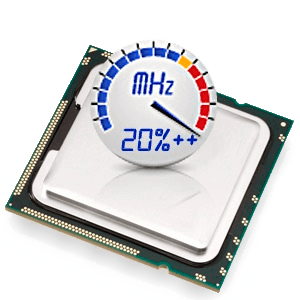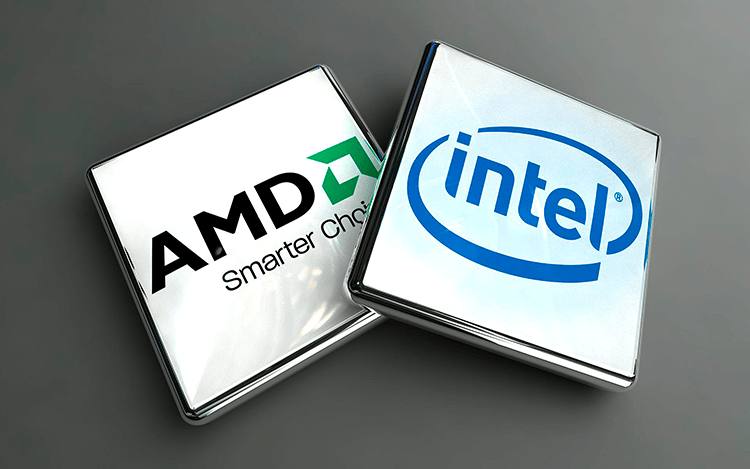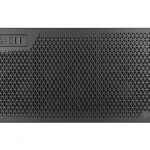It is not always easy to make choices and compromise when buying gadgets. Deciding which CPU to choose could be especially challenging when it comes when buying a new PC, whether it is a ready-made one or a custom configuration. Although the choices are limited – there are only two major CPU manufacturers for consumer PCs: Intel and AMD – it’s not an easy decision to make. So, let us see “who is who” nowadays on the CPU market and help you to make it a right decision.
First of all, it would be worthwhile to identify which tasks the future PC will be dedicated to performing the most. For example, if the computer will be used in a narrow, specific field like scientific research or massive data processing, or, if it will be an extreme gaming station or home theatre PC. Of course, you should not only consider the CPU, but other components, too, since overall performance of the system depends on all key components. For example, a last generation, top of the line video card and single core CPU that was launched, say, 5-6 years ago wouldn’t be a great combination for a good gaming, since the CPU will be slowing down the whole system due its weaker performance in comparison with video card. Don’t get it wrong – they would be still compatible and the PC will be working fine in general, but the performance in games will be quite questionable or even disappointing.
Value
By looking at the line-ups of both Intel and AMD, we will find out that AMD chips are a bit less expensive. However, that doesn’t make AMD chips a better value due to lower computing performance per dollar. Here it is important to understand how much money you are ready to invest into CPU by identifying the circle of tasks the future PC will be doing.
If budget is limited, but you are still planning to have an acceptable performance in gaming, for instance, AMD on-board graphics solutions have better performance than Intel for a lower price. For example, AMD’s Quad-core A10-7870K 3.9GHz is currently priced for around $140 and similar performance Intel Core i5 4440 3.1GHz is $180. Of course, AMD here is not a gaming powerhouse, but it will exceed the performance Intel HD Graphics solution, so you might be better off with AMD if you need to play games with medium details and 1080p resolution on a budget.
However, if budget is not a question here, Intel definitely will be preferable choice, since their chips still having superior computing performance per dollar. A piece of advice here – if you planning to buy a brand new processor on the day it is launched, you might end up paying considerably more, rather than you wait a couple of months, because usually prices drop dramatically after introduction of the new chips.
Overclocking

In mid-range segment, AMD also offers several chips with overclocking features, while Intel doesn’t really. However, if we would talk about high-end segment of Intel’s processors, there are several that support overclocking (and some even with eight physical cores) and AMD here would be no match – these CPUs are much faster at stock clocks than anything AMD can offer so far, not to mention overclocking. You just can’t buy anything as quick as these for home use.
All in all, whether a wide overclocking support of AMD’s chips make them a better choice in a long run might be arguable. It would very much depend on both the general workload of the system and how much effort you are willing to put into overclocking.
Gaming
As its already mentioned, some AMD chips outrun Intel HD graphics in a budget gaming segment with their integrated Radeon graphic solutions – AMD has been heavily investing in graphics technologies (especially for gaming laptops) since they bought ATI back in 2006. Although it would be worth mentioning that the latest Intel Iris Pro technology implemented in the last generation of Core processors, is a big improvement over the previous HD Graphics systems.
However, when it comes to the question of building a gaming pc – integrated graphics systems would not be a preferable solution over a dedicated graphics card. And here Intel processors may be a better choice due to their impressive performance alongside the high-end graphics cards. AMD chips just are not as quick as Intel, which would have a significant slowdown of the system. Of course, by choosing Intel processors you’d have to consider a serious investment, but then again if you are serious about high-end gaming, that would be obvious and the only choice.
Power consumption and heating
AMD is managing to produce CPUs that are competitive with Intel ones, the drawback of their efforts appears to be a higher power consumption of their chips. As a comparison, we might take the abovementioned Intel Pentium G3258 with TPD (Thermal Design Power) of 53W against similarly prices AMD A6-7400K with 65 watts TPD. Not to mention that according to benchmarking Intel chip is faster by most performance indicators and in some areas by a significant margin. Which means Intel would run faster while using less power. Hence, less heating and no need for more powerful and bulky cooling solutions for desktop systems. For example, Intel’s newest Core i7 5775C processor even when overclocked up to 4.2GHz is running under 60 degrees on the stress tests, which once again confirms that Intel is doing a better job than AMD at keeping their CPUs cool.
Custom PCs
If you’re planning to build up your own custom PC the situation here would be pretty much the same – AMD would win on the price for a budget solution, but for serious performance demands, we would rather recommend going with Intel. And don’t forget the bottlenecks of AMD chips – power consumption and heat radiation. So if you still want to stick with AMD, you’d have to seriously think about proper and sufficient cooling. It doesn’t mean that Intel-based systems are less demanding in this regard – proper and efficient cooling never hurts. It just means that for Intel there’s less effort is required.
Another factor of consideration would be the variety of the motherboards – Intel has a wider choice of boards (hence, more possibilities while estimating the budget) for any Intel CPU socket design in comparison to AMD.
And the winner is?
As mainstream manufacturers of CPUs AMD and Intel have been in competition for decades now. There were ups and downs for both at different times. But as we can see today, Intel processors are slowly outweighing AMD ones by several factors, especially if you have a high budget – Intel chips here are faster, and far more power efficient, which directly affects heat and noise production into lower rates. It could be especially critical when you’re looking for a gaming laptop – less power consumption will greatly improve battery life.
Nevertheless, there is no categorical and short answer to who is the best – it depends on what you’re planning to do and what you’re willing to spend. Yes, Intel is generally superior, but AMD will make sense in certain scenarios as well. It’s all about putting up pros against cons and realizing what you actually want to achieve. And if at the end of the day you’d still be able to make up your mind – just go for Intel’s solutions. Most probably, it would be a win-win situation for you.









No comments yet